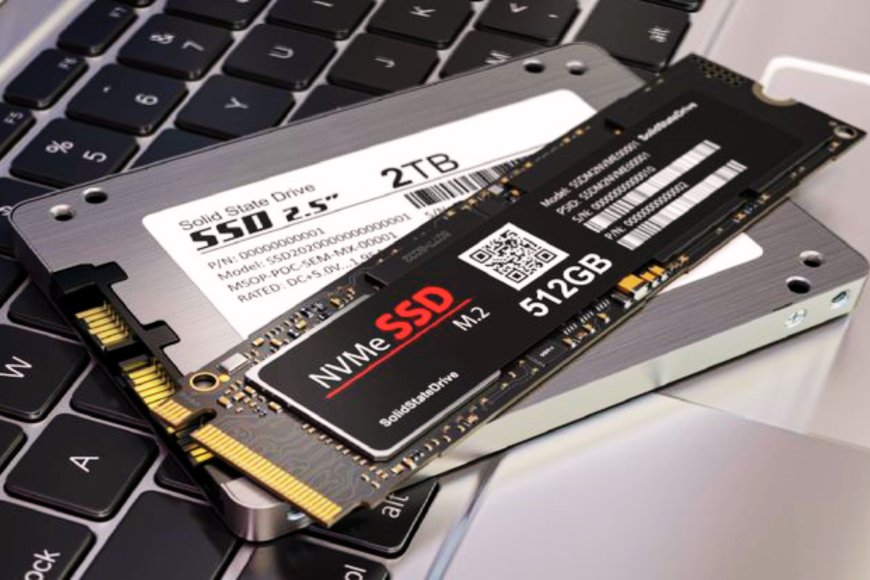Improve SSD Health and Speed: How TRIM Keeps Your Storage Clean and Efficient
TRIM is a crucial SSD feature that boosts speed, extends lifespan, and prevents slowdowns, but it complicates data recovery and isn’t always auto-enabled.

Solid State Drives (SSDs) have become the go-to storage solution for faster, more reliable performance compared to traditional Hard Disk Drives (HDDs). However, SSDs function quite differently from HDDs, and one key technology that helps maintain their performance is called TRIM.
What is TRIM?
TRIM is a special command used by SSDs to improve performance and extend the drive’s lifespan. When you delete a file on your computer, it doesn’t immediately disappear from the SSD. Instead, the space it occupied is marked as "no longer needed," but the actual data remains until the SSD clears it out later. TRIM helps by telling the SSD exactly which data blocks are no longer in use, so the drive can clean them up in the background and be ready for future write operations.
How Does TRIM Work?
SSDs store data in blocks made up of smaller units called pages. While data is written at the page level, deletion happens at the block level — and this creates a problem. If even one page in a block still contains valid data, the whole block can’t be erased until that valid data is moved elsewhere.
This is where garbage collection comes in — a process that gathers up valid data from partially used blocks, moves it, and then erases the old blocks. TRIM enhances garbage collection by giving the SSD a heads-up on what’s no longer needed, so it can manage space more efficiently in the background.
Importance of TRIM for Your SSD’s Performance and Lifespan
1. TRIM Reduces Write Amplification
Every time data is written to an SSD, it goes through a Program/Erase (P/E) cycle. However, unlike hard drives, SSDs can’t just overwrite old data — they need to first erase it. If the SSD doesn't know which data is no longer needed, it might copy unnecessary data around before it can write new data. These results in write amplification, where more data is written than actually needed, wearing out the drive faster.
How TRIM helps:
TRIM tells the SSD which pages of data have been deleted by the user and are no longer needed. This allows the SSD to erase those blocks in advance, avoiding unnecessary data movement and reducing the number of P/E cycles, which in turn extends the life of the SSD.
2. Maintains High Write Speeds Over Time
When you first install a new SSD, you’ll likely be amazed by its lightning-fast speeds. But without TRIM, that speed can fade after a few months of use. This slowdown happens because the SSD starts running out of "clean" blocks to write data to — and has to pause to clean up used blocks before writing new data.
How TRIM helps:
TRIM ensures that the SSD always has plenty of pre-erased, empty blocks ready in advance. This reduces the time it takes to write new data, helping your SSD maintain consistently fast performance.
3. Prevents Slowdowns during Important Tasks
Without TRIM, your SSD may start garbage collection — the clean-up process — right when you're in the middle of important tasks like editing videos or playing games. This unexpected background activity can cause your SSD to slow down at the worst times.
How TRIM helps:
TRIM works proactively by marking blocks as unused when data is deleted. This allows garbage collection to run quietly in the background during idle times, not during peak use. That means fewer frustrating slowdowns when you're doing resource-heavy tasks
4. Extends the Lifespan of Your SSD
Each SSD has a limited number of write and erase cycles. Without TRIM, your SSD may use up those cycles more quickly because it has to do more work than necessary — repeatedly moving and erasing data it didn’t know was no longer needed.
How TRIM helps:
By enabling the SSD to clean up efficiently, TRIM reduces the wear and tear on the memory cells. This preserves the health of your SSD, helping it last longer and perform better throughout its life.
Key Disadvantages You Should Know
1. Makes Data Recovery More Difficult
With TRIM enabled, deleted files are quickly wiped, making recovery nearly impossible — even with professional tools.
2. It’s Not Always Enabled by Default
Older systems may not have TRIM turned on, leading to slower performance over time unless manually enabled.
3. In Rare Cases, It Can Cause More Wear
On older SSDs, TRIM can cause extra data movement, increasing write amplification and wearing out the drive faster.
Summary
SSDs offer impressive speed and durability, but they need smart maintenance to stay in top shape. TRIM is a crucial command that works behind the scenes to ensure your SSD runs efficiently, lasts longer, and avoids unnecessary slowdowns. TRIM is essential for keeping your SSD clean, fast, and ready for the future.







